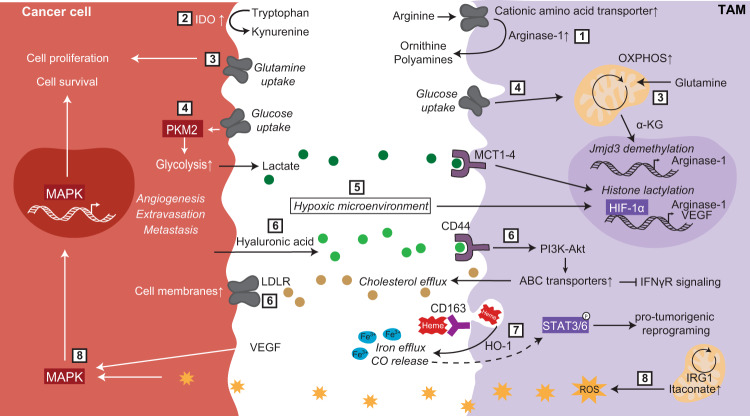Fig. 4.
Tumor-associated macrophage and cancer cell cross-talk. Cancer cells and tumor-associated macrophages engage in metabolic cross-talk, which has been shown primarily to support tumor cell growth and survival. This includes increased arginase expression by macrophages promoting arginine metabolism (1); tryptophan metabolism in cancer cells via IDO (2); glutamine metabolism in cancer cells to promote their proliferation and in macrophages to drive anti-inflammatory gene expression (3); glucose metabolism-mediated increases in extracellular lactate, which modulates macrophage function (4); the induction of and response to a hypoxic microenvironment (5); cholesterol export from macrophages (via ABC transporters) to cancer cells (via LDLR) (6); heme metabolism and iron efflux from macrophages (7); and mitochondrial ROS production (8). More details of these pathways can be found in the main text. CO, carbon monoxide. Solid lines: direct relationships; dashed lines: indirect relationships. Brown circles: bound cholesterol/LDL/oxLDL; dark green circles: lactate; light green circles: hyaluronic acid; orange stars: ROS

